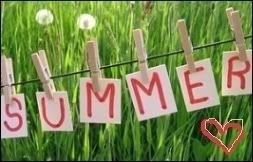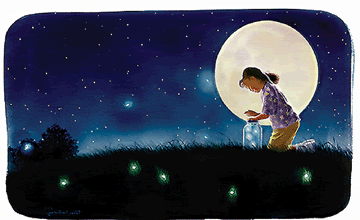In 1913, my great-grandfather, Frederick Hartmann, got a great deal on a couple of lots in Delray Beach. It was buy one, get one and he jumped at the offer to purchase his piece of paradise. The lots were surrounded by pineapple fields. Adolf Hoffmann, one of the movers and shakers of the day, lived to the north and a few blocks to the south was Atlantic Avenue, even then a main street. Fledgling Federal Highway sat a short block to the west.
It wasn’t until 1926 that the house that sits on the southernmost lot was built. A large two-story house, it was later inhabited by my grandparents, Gustav R. Hartman and Ione Hartman and their children, Marjorie Ann, Norman, Warren and Allen. Gustav was the Assistant Postmaster of Delray Beach. I only found out through research recently that my Dad was arguably one of the best athletes of his era at Seacrest High School. He was always too modest to talk much about it although he did ‘fess up to holding a high-game basketball score that stood for twenty years or so. He had no choice on that one. The story about the twenty-six year record being broken appeared in the newspaper my senior year of high school.
My father has shared stories of riding his bike across Federal Highway to deliver papers to the Sundy’s and other residents to the west. My Uncle Allen told me of the days when he crossed Federal all by himself to walk to school at what is now Old School Square.
Over the years, the warp and weave of Delray Beach has wandered through a pattern of its own design. The neighborhood around my grandparents house went from pineapple fields to homes. Federal Highway went from a little scraggly highway in name only, to an actual thoroughfare. When I was around ten, Bud’s Chicken went in directly behind the house. My cousins and I were often sent through the ficus hedge, money in hand, to pick up chicken dinners for the family on those days when everyone stayed too long in the pool and no one felt like leaving the cool water to rustle up a meal.
The neighborhood surrounding the house has had it’s bad days. After my grandmother sold the house in 1973, the house fell into disrepair and became a derelict relic of the past. Federal Highway slid into vacant lots, old buildings and car dealerships as Delray struggled. Decisions on what to allow to be built on Federal Highway appeared to be made haphazardly based on a criteria few understood and Federal became a shadow of the busy center of commerce it had been years ago.
Somewhere in the 1990s, a new spirit entered the city and renovation, restoration and revitalization grabbed hold of the imaginations of the residents. The now thriving Atlantic Avenue is an incredible testament to the power of positive thinking following by determined action.
The house my great-grandfather built was finally blessedly bought by Benita and Jordan Goldstein who brought Delray Beach’s first bed and breakfast to fruition. The Historic Hartman House opened its doors in 2011 representing a revitalization of the Palm Trails neighborhood.
I never knew my great-grandfather, he died while my Dad was a child, but I sure knew my grandparents, Gus and Ione Hartman. They’d get a kick out of the "Historic" designation, I’m sure. The bed and breakfast has a well-deserved international reputation as a beautiful, peaceful oasis a few blocks from the hub of town. The Goldsteins make every guest feel like they’ve arrived home in a place they’ve never been before.
On April 3, I attended the
Delray Beach City Commission meeting. I was there to support the Goldsteins and their neighbors as they stated their opposition to the opening of a proposed detox center in the
Delray Inn, an old motel on Federal Highway behind the Palm Trails neighborhood that sits catty-corner to the Historic Hartman House. My argument was that after all the work the town, the Goldsteins and the local historical groups did to restore and renovate the Historic Hartman House, a detox center would be a glaring neon light on a peaceful landscape. Disruptive to the natural ebb and flow of the neighborhood much as plopping a bunch of movie premiere spotlights on the beach one evening to light up the sand would be to the serenity of the beach.
 |
Current Delray Inn
(Photo from their website) |
The Commission chambers were filled to overflowing with people who had variations of the same argument as well as some other pointed questions. I sat horrified as the attorney for the Delray Inn accused those speaking in opposition to the center of demonizing addicts in our quest to keep them out of the area. Far from it. Many who spoke knew all too well the personal toll addictions take. It’s just not possible to have the best of both worlds when we speak about a detox center abutting a neighborhood filled with historical homes. Which is more important? Which belongs there?
Don’t misunderstand me, I strongly believe that there is a need for detox centers. Addicts don’t choose anything but their very first hit. After that, they, their families and friends, are victims. They're controlled by other forces and breaking those chains are not only difficult, but dangerous. But does one belong at the back door of a neighborhood fighting to re-emerge from decades of struggling against the slide into decay?
The Delray Beach City Council voted no. Among other issues and concerns, the compatibility issue loomed large and added to the grounds to deny the center on the Delray Inn property.
History is that topic a lot of kids hated in high school. I had friends who’s eyes glazed over as they walked in the classroom door. But history IS important. We can’t tell where we’re going if we don’t have a clear picture of where we’ve been. Sometimes, it’s only by looking at the past and relishing the good things about way back when that give us courage to keep moving forward in a sometimes harsh and frightening world. There's a feeling of helplessness when economic collapse sits waiting to pounce on anyone and the future looks bleak.
Yes, a detox center is crucial. Perhaps Delray doesn’t need ALL of the rehab centers that make Delray Beach the "rehab capital of the world." I don’t know. What I do know is that there is another place for a detox center. A place where it would be welcome. A place near the hospital for those dangerous physical side-effects of detoxification. It didn’t have to be located at the Delray Inn.
I know that on April 3, the Delray Beach City Commissioners voted to permit the historical flavor of the city to continue to grow. It chose to continue on the path of restoration and renovation to keep pushing and pulling Delray Beach toward a reputation as a destination worth visting-worth moving to-worth living in. It chose to cherish and protect the remnants it has of those days when pineapples outnumbered people in Delray Beach.
Worlds collide. And this time, the past won.
(c) copywrite 2012 Ruth Hartman Berge








